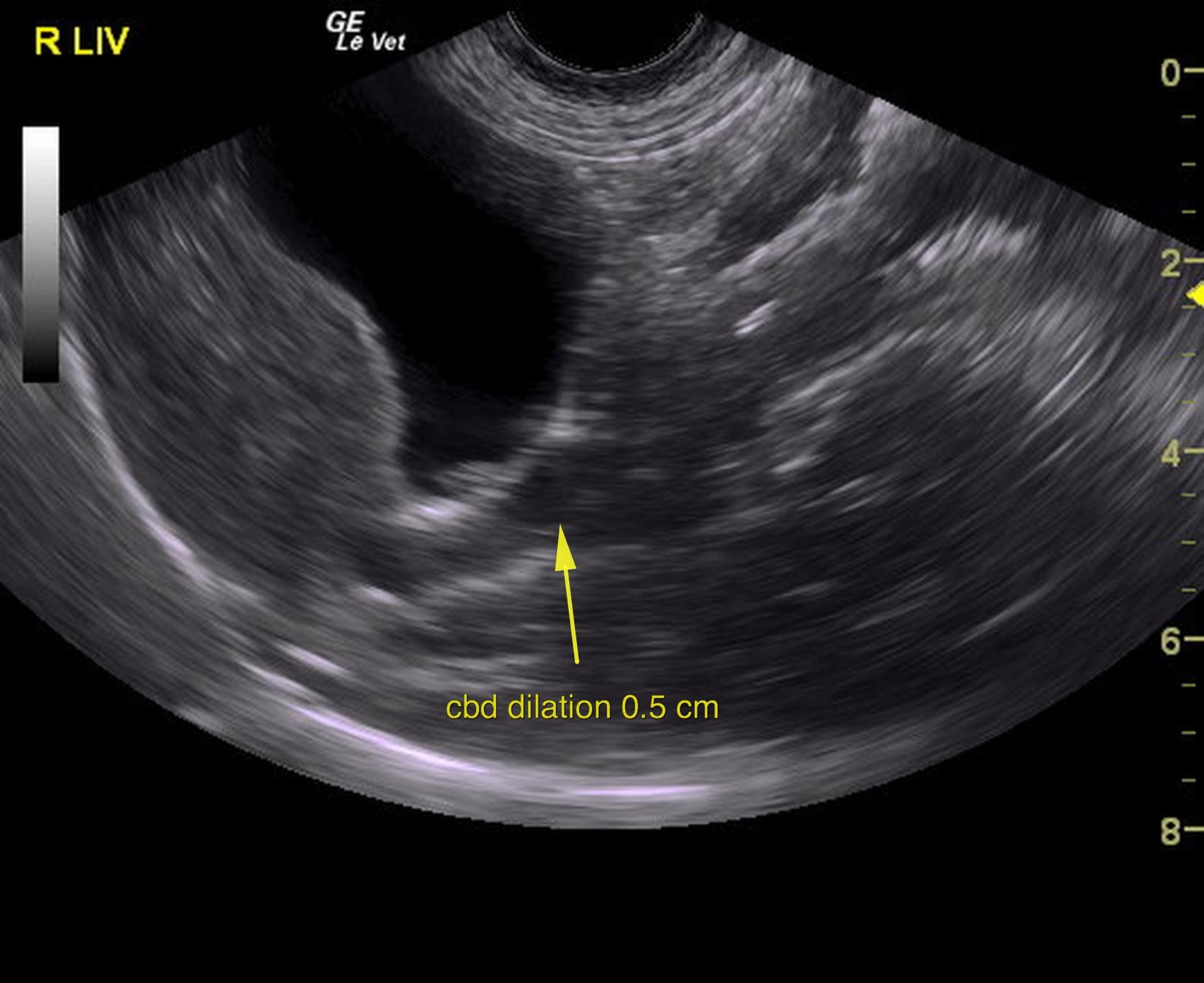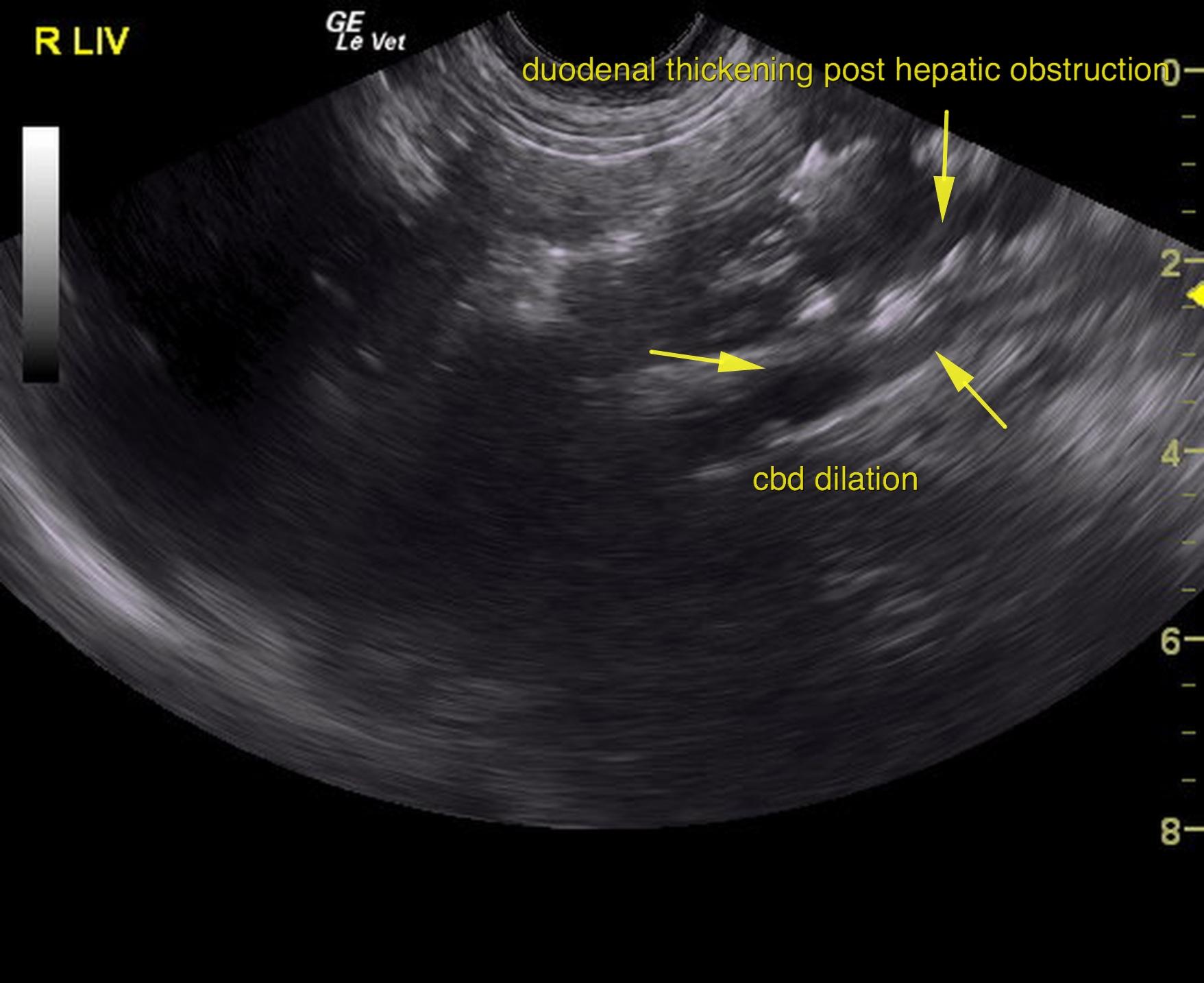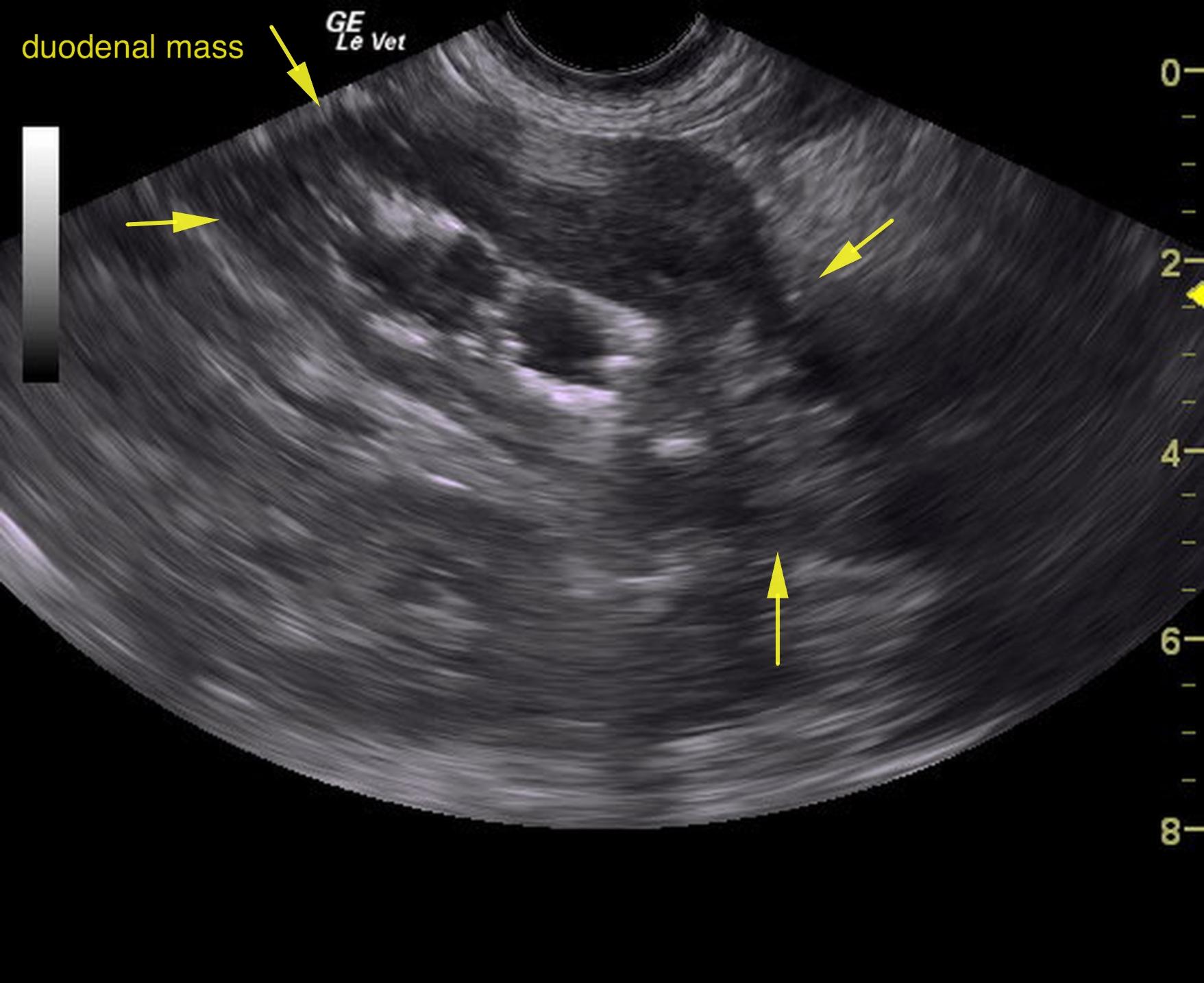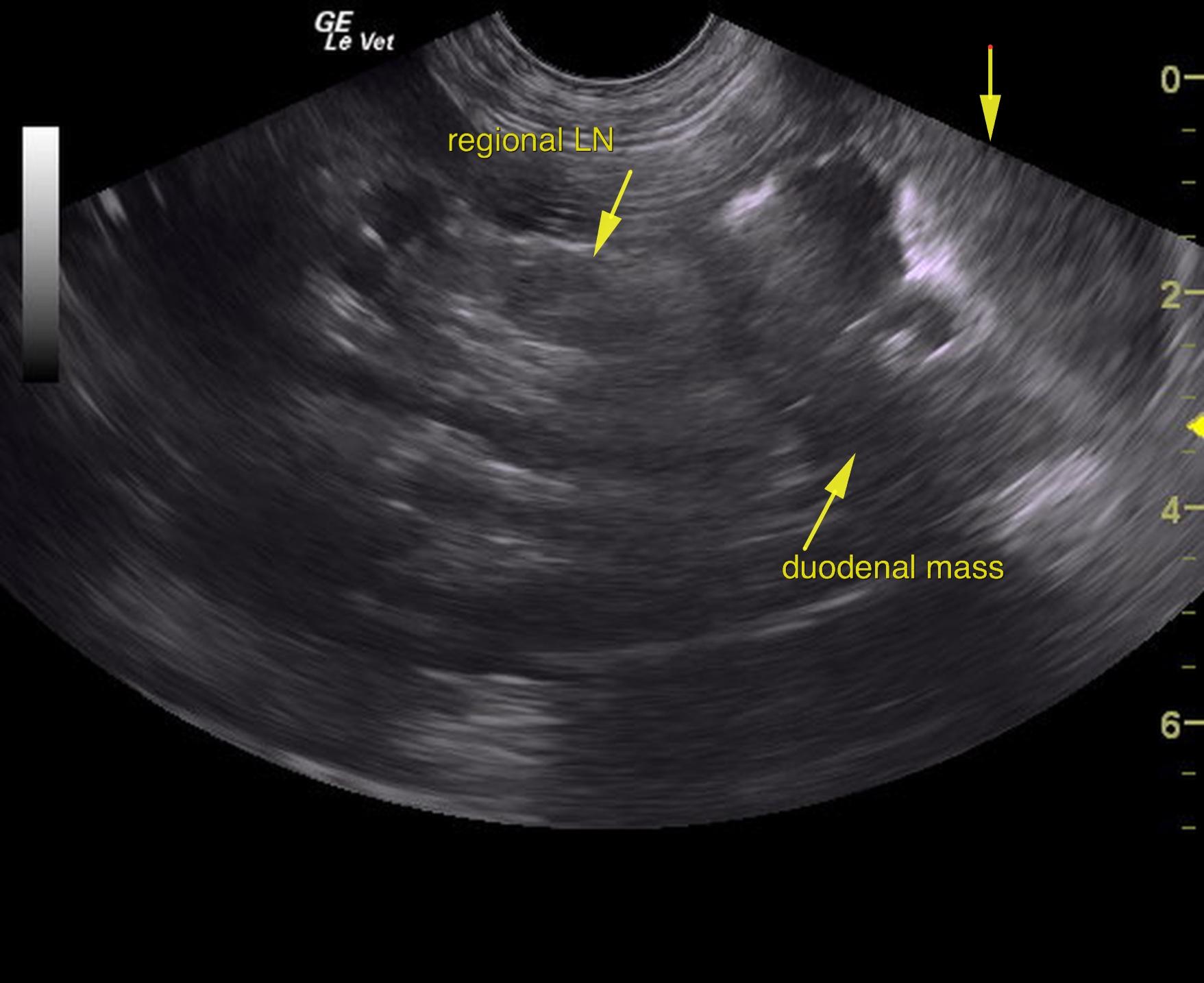A 7-year-old SF Shar Pei was presented for evaluation of vomiting for 2 days, inappetence, and icterus. CBC was within normal limits. Abnormalities on serum biochemistry were elevated ALT (2067) an ALP activity (977), and total bilirubin. Coagulation panel showed prolonged PTT (71).
A 7-year-old SF Shar Pei was presented for evaluation of vomiting for 2 days, inappetence, and icterus. CBC was within normal limits. Abnormalities on serum biochemistry were elevated ALT (2067) an ALP activity (977), and total bilirubin. Coagulation panel showed prolonged PTT (71).





